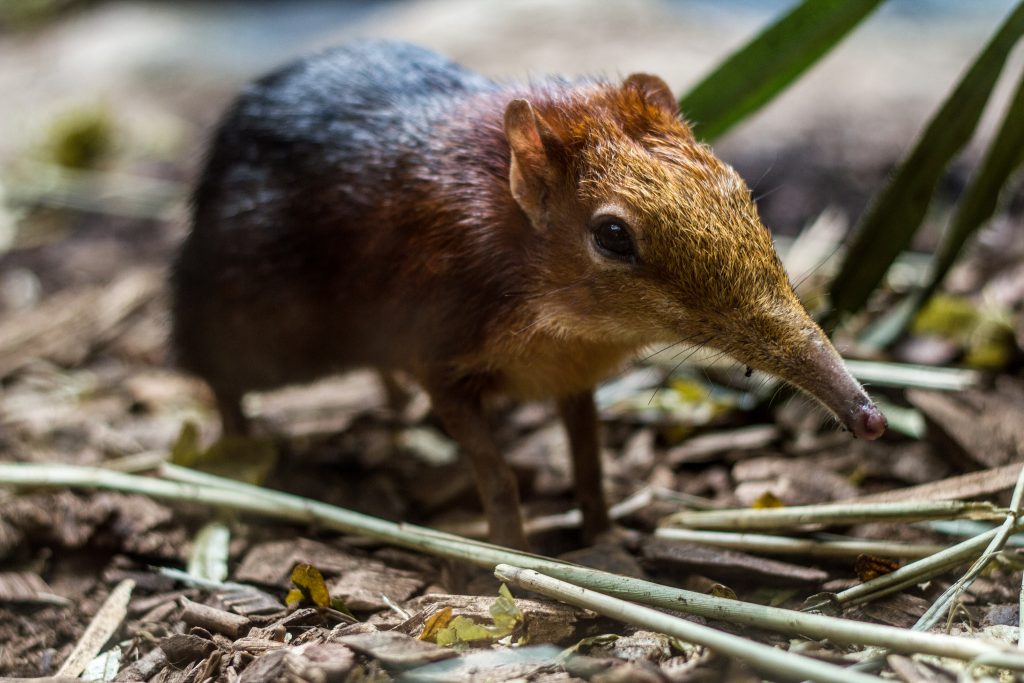Deep in the wilderness of Africa, a beast with a long snout is terrorizing living creatures. After coming out of its hiding spot, it sucks the life out of them, then darts away into the shrubs with a full belly. This beast is the tiny elephant shrew, some standing at just 4 inches tall and weighing in at around 1.8 ounces. For us humans, we have nothing to worry about, but there is a reason this creature earned its name. Put your knowledge to the test and read on to learn about this fantastic animal.

Courtesy of wikipedia.org
They’re lousy lovers
He’s a wham, bam, thank you’ ma’am type of a guy (and lets be honest, so is she). Elephant shrews do not have a sense of monogamy or an iota of romance in their tiny bones. They lead solitary lives, looking out for no one but themselves and will only seek another for reproduction. In come cases, elephant shrews will stick around after mating but they’ll build separate nests in close proximity, that way they can still lead separate lives and avoid each other as much as they can. In other words, they live like an old married couple.

Courtesy of Lennart Tange/Flickr.com
They have an incredible ability to adapt to their surroundings
Stick him in the wet forest or in the driest region of Namibia and he’ll prosper there as if he receives royalty checks monthly. Because they’re so versatile and have the ability to adapt to wherever they are, you can find them scattered throughout all of Africa from Morocco to South Africa. They can live anywhere from mountains, desert, savannas, grasslands, jungles and forests. Although they’re everywhere, its hard to spot them on your safari trips or hikes since they scamper away so fast at any sound you make.

Courtesy of Kim/Flickr.com
Their name is based on their long snout
Their noses are trunk-like, just like an elephant’s which gives the shrew’s its rightfully earned name. They can even move and twitch their noses around. Their noses come in handy when it comes to hunting as an elephant shrew will use the snout to burrow around (like an anteater) until it finds insects. Once it finds the insect, it will lash out its long tongue to suction the unsuspecting bug into its mouth for a yummy snack.

Courtesy of archive.kiza.eu
Females actually get periods
Female elephant shrews are some of the few mammals that actually get a menstrual cycle. Because of her cycle, she’s able to produce offspring several times a year. Meaning a female can give birth to up to 15 baby shrews in five births within a year. That’s one busy lady! The babies are incredibly independent and will venture off on their own after a few days after birth (making us human babies look pathetically needy).

Courtesy of Hans Splinter/Flickr.com
They go with the fight or flight method
When faced with their enemies like a snake, lizard or bird, the elephant shrew will do either one of the two things; fight or flight. The rodent has a useful advantage of being fast, often hopping like rabbits, and can usually dart away into a safe spot. But once cornered, the elephant shrew will stomp the ground with his tail and legs in hopes of scaring off its predators. And when all else fails, the shrew will thrash around like a toddler in tantrum, refusing to accept its demise.

Courtesy of publicdomainpictures.net
There are 19 species
You might’ve noticed that some of the shrews throughout this slideshow look different. There are 19 species of elephant shrews throughout the continent including the short-snouted elephant shrew, Karoo rock elephant shrew, Somali elephant shrew, and the Dusky-footed elephant shrew. Although the elephant shrews are doing well in most areas, the Golden-rumped elephant shrew from Kenya is officially on the endangered species list, thanks to deforestation and locals trapping them for food.
More from AFKTravel:
6 Things You Didn’t Know About The Agama Lizard
6 Things You Didn’t Know About Bongos
7 Strange Facts You Didn’t Know About Ostriches
Want to discover the finer side of Africa? Sign up for our weekly newsletter.
